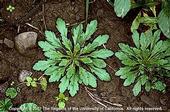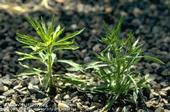- Author: Ben Faber
- Posted by: Gale Perez

A recent call about the poor control of marestail (horseweed, Conyza canadensis) to glyphosate (Roundup®) wasn't surprising, but that paraquat didnt do the trick was. It turns out that there is multiple resistance to the materials. If horseweed is resistant to glyphosate it is possibly going to be resistant to paraguat which also means that hairy fleabane which has glyphosate resistance could also show resistance to paraquat. A recent study reports on the increased Conyza resistance to paraquat (Distribution of Conyza sp. in Orchards of California and Response to Glyphosate and Paraquat, Moretti et al,
- Author: Ben Faber
- Re-posted by: Gale Perez

From the Topics in Subtropics blog ∴ June 15, 2016
Researchers have now confirmed that six glyphosate-resistant weed species have been identified in California. Four have been known to exist for some time; they are horseweed (marestail, Conyza spp.), hairy fleabane, rigid ryegrass and annual ryegrass. To that list, junglerice and Palmer amaranth in the Central Valley have been recently added to the list. Additional weeds that have become more of a challenge to control and are on the suspect list are goosegrass and, in the central San Joaquin Valley, the summer grasses sprangletop and witchgrass.
There have never been a lot of...
- Author: Oleg Daugovish
- Posted by: Gale Perez

From the Topics in Subtropics blog :: July 5, 2013
It is not always easy to kill weeds with herbicides for several reasons, but if you apply the right material at the right time to susceptible weeds you expect control. But you should never assume it, because resistant weeds rely on this assumption.
Repeated use of herbicides with the same mode of action (usually the same target site within plant) selects for naturally occurring resistance traits in weed population. The few resistant weeds proliferate since there is no longer competition from susceptible types and if other control measures are not...
- Author: Richard Smith
- Author: Larry Bettiga
- Author: Brad Hanson
Marestail (Conyza canadensis; aka horseweed) and hairy fleabane (C. bonariensis; aka flax leaf fleabane) are serious weed problems in vineyards in Monterey County. Both plants are summer annuals that germinate in the fall at the onset of the rainy season (October – February), or germinate in the spring (March – May). Seeds of both species are not long lived (2-3 years) and are ready to germinate when conditions allow as soon as they mature on the plant; they germinate on the soil surface or from no greater than 0.2 inch deep. The seedlings of the two species look very similar to each other until they bolt at which time they can be easily distinguished (for detailed information on these species go to:...


